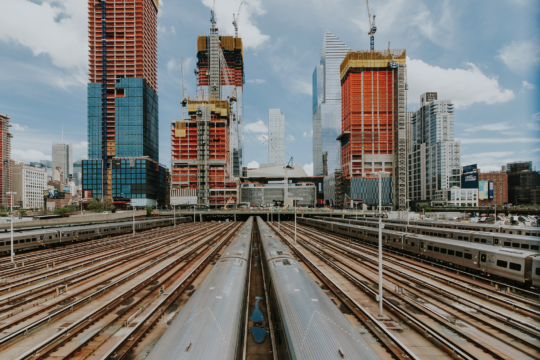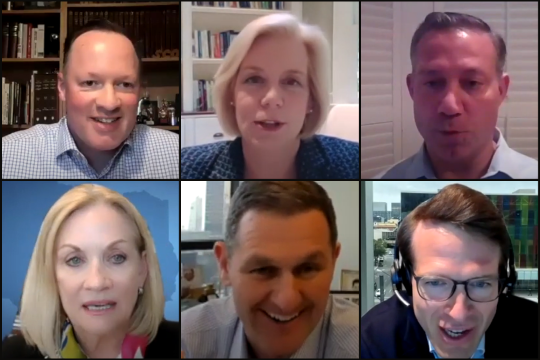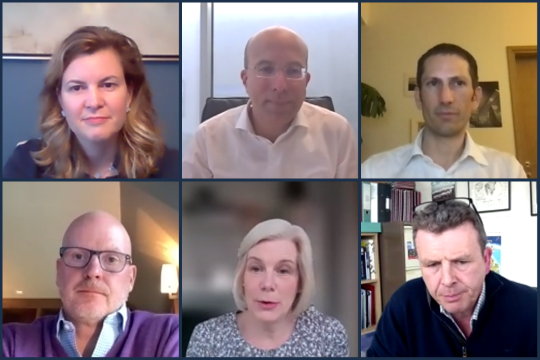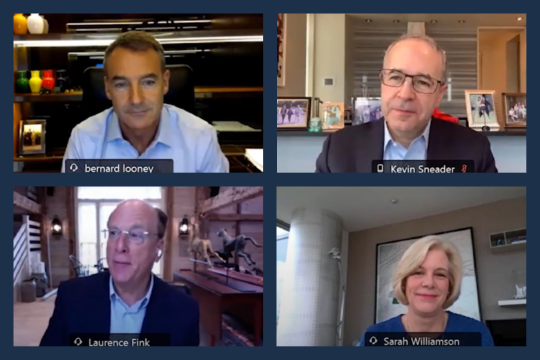
Infrastructure investment offers an opportunity for long-term investors to earn their required returns responsibly, in ways that align with their purposes.

Infrastructure investment offers an opportunity for long-term investors to earn their required returns responsibly, in ways that align with their purposes.
The U.S. House of Representatives is heading toward a vote on a trillion-dollar infrastructure bill, including numerous program reauthorizations and $550 billion in new spending. From across the northern border, the reaction from John Graham, President and CEO of Canada Pension Plan (CPP) Investments, is about how to “increase spending even beyond that amount.”
These are eye-watering numbers and Graham is right. Massive additional sums will be needed for climate resilience, complete removal of lead from water lines, restoration for communities of color severed by past infrastructure-building, and many other necessities.
Something beyond government spending will be required and, as Graham signals, it will be direct investment from pension funds, central banks, sovereign wealth and development funds, endowments and foundations, and insurers who collectively steward trillions of dollars – often of public money. Expecting them to provide it is entirely reasonable. Institutional investors are already coming to see investing in infrastructure as their responsibility.
“We’re going from paper investors to ‘how do we now connect our decisions and our risk mitigation to the broader economy and participants,’” mused Bryan Lewis, Chief Investment Officer at US Steel. “We can focus more on real assets.”
The institutional investors who are adapting this point of view are reallocating money from stocks and bonds into bridges, ports, and railways. They do so in part because they have revisited their purpose. Institutional investors exist to do things like offer dignity in retirement, provide for a country’s economic security, or foster sustainable growth – all of which depend not just on the return that they earn but also on the manner in which they earn it.
Infrastructure investment offers an opportunity for long-term investors to earn their required returns responsibly, in ways that align with their purposes. Yet these are not easy investments to manage, and success is not at all certain.
Earning the long-term premium takes patience, along with good management and due diligence. The onset of COVID-19 is an object lesson. In just a few weeks’ time, transportation – a principle use of physical infrastructure – plummeted. Airports emptied. Roads cleared. All their associated revenues, the source of investment income, simply stopped while the cost of keeping them operating did not. In strictly financial terms, mothballing the infrastructure until demand recovered would have been the rational optimization.
In reality, closing ports would have meant slowing down the movement of ventilators, N-95 masks, and oxygen canisters while hospitals were grasping to control outbreaks. The investment to keep infrastructure operating throughout the crisis was an investment in resilience. The return on that kind of investment is strong but not necessarily steady. For instance, flights can rebound quickly now because facilities never closed. That said, the delta variant is already threatening this reopening and flights will drop again just as fast if a truly vaccine-resistant strain of the virus takes hold. Hence the need for patience.
Take it from David Neal, CEO of IFM Investors, an Australian asset manager focused on infrastructure and owned by many of the country’s superannuation funds. “Pension capital has a greater capacity to absorb the volatility associated with greenfield developments, as it has the ability to smooth out the investment across a 30–40-year horizon. The returns on pension capital also serve to protect and appreciate the retirement savings of millions of working people around the world – often the same people who will use and benefit from new infrastructure in their communities.”
The concept of responsibility, so evident in Neal’s remark, is an important part of making infrastructure more appealing to investors in this part of the value chain. The same can be said of risk. Volatility defines risk in the minds of many investors and, accordingly, governs the way they allocate capital. Long-term investors, competent and confident in managing their own liquidity, see opportunity in persevering through market volatility and realizing the real value of an infrastructure investment.
Political platforms around the world are putting infrastructure back on the priority list, and public spending likely will be the primary way of paying for it, but even more will be needed. Long-term institutions can find real opportunity by joining the effort while doing more to fulfill their Main Street responsibilities along the way.

Climate | Video
21 May 2021 - The world’s infrastructure systems face critical challenges as we look to meet the needs of a growing, increasingly urban population while at the same time dramatically reducing carbon emissions. Technological advances and the Covid-19 epidemic have expanded our conception of critical infrastructure, as telecommunications and other resources become imperative to people and economies around the world.

Climate | Video
14 April 2021 - A discussion from 14 April 2021 among top business leaders and institutional investors on the opportunities ahead to position the food and agriculture industry for a more sustainable future.

Climate | Video
6 November 2020 - On Friday 6 November, FCLTGlobal and McKinsey & Company hosted the first panel in our virtual event series, "Investing in the Sustainable Transition." Larry Fink (BlackRock), Bernard Looney (bp), Kevin Sneader (McKinsey), and Sarah Williamson (FCLTGlobal) discussed the progress and outlook for sustainability within the global energy sector.